Multiflora rose identification and control
Information about the weed multiflora rose. Multiflora rose is also known by its Latin name, Rosa multiflora.
About this weed
Multiflora rose is designated as a weed of concern in King County and is on the Monitor List of the Washington State Noxious Weed Control Board. This means control is not required, but is recommended, and new plantings are discouraged.
Multiflora rose is known as Rosa multiflora, and it is in the rose family. Other common names include baby rose and rambler rose.
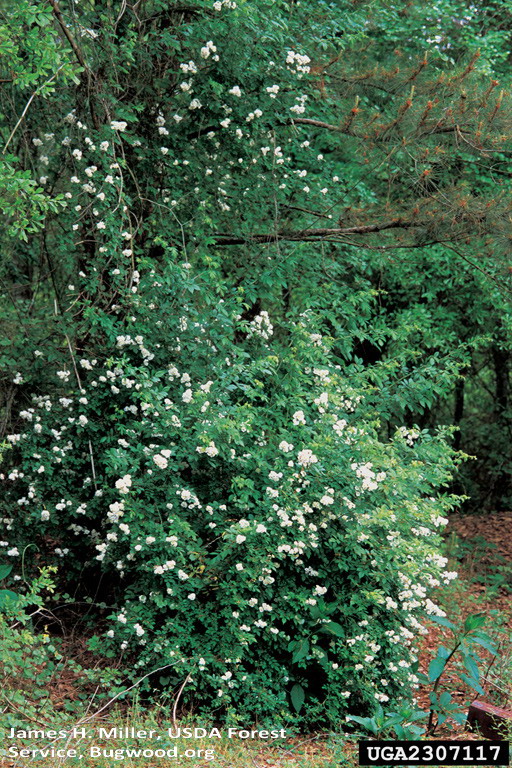
Why it’s a problem
Multiflora rose tolerates a wide range of soil, moisture, and light conditions. It can readily establish in fields, forests, stream banks, some wetlands, and many other habitats. Dense thickets of multiflora rose exclude other beneficial vegetation and may be detrimental to nesting of some native birds. In pastures, multiflora rose can form thickets that exclude livestock and reduce forage areas. Multiflora rose can climb ten feet or more into the lower branches of trees.
Plant description
Multiflora rose is a thorny, multi-stemmed, perennial (plants that have a life cycle of 2 or more years) shrub. Stems are bright green to reddish and usually have curved thorns but sometimes can be thornless. Flowers are white to pink in color. The flowers grow in large clusters with notched petals.
Plants can grow as a thicket and climb into the lower branches of trees. Multiflora rose resembles other roses and bramble species but is distinguished by fringed stipules (the leaf-like part that grows at the base of the leaf stalk), upright arching stems, and the clusters of numerous small leathery rose hips that persist over winter.
Multiflora rose reproduces by seeds that are dispersed primarily by birds that eat the fruits. Seeds may be viable in the soil for up to twenty years.
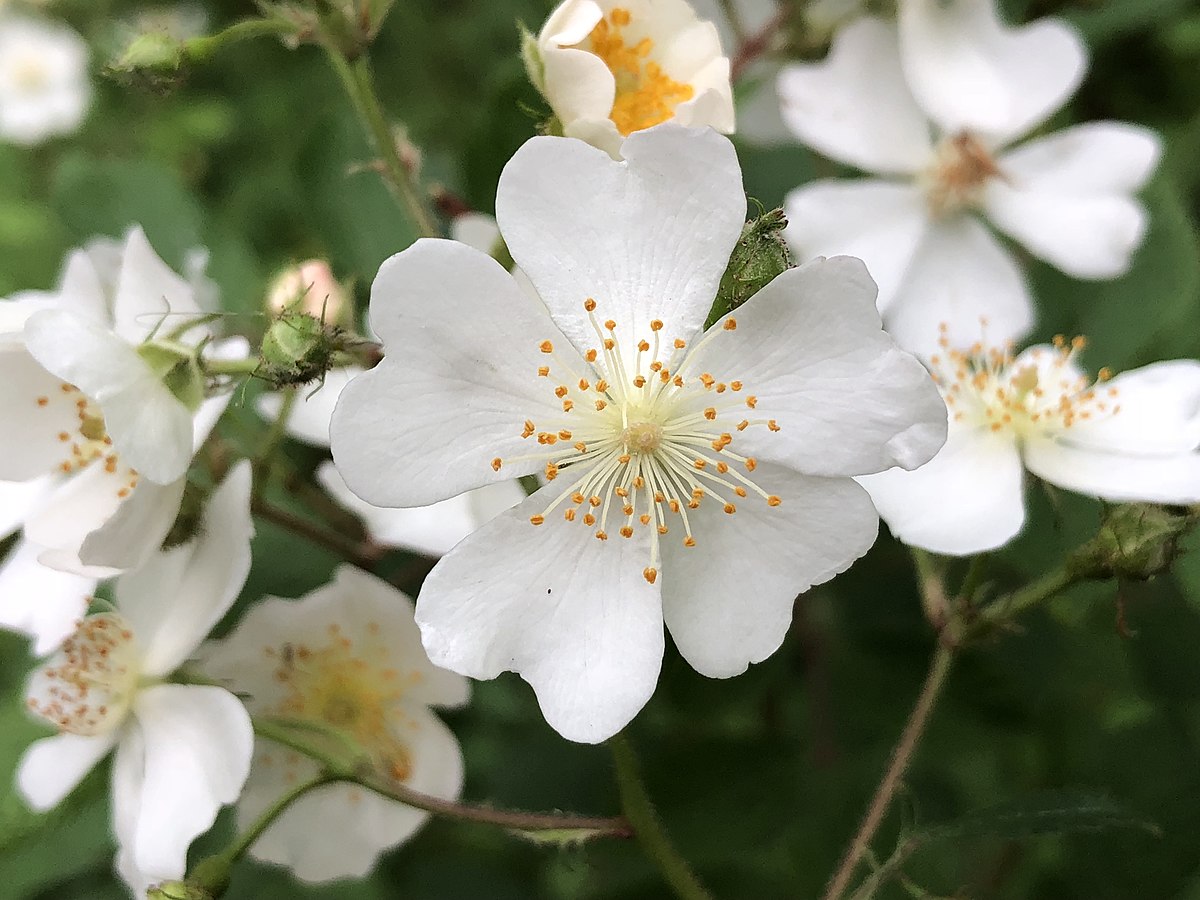

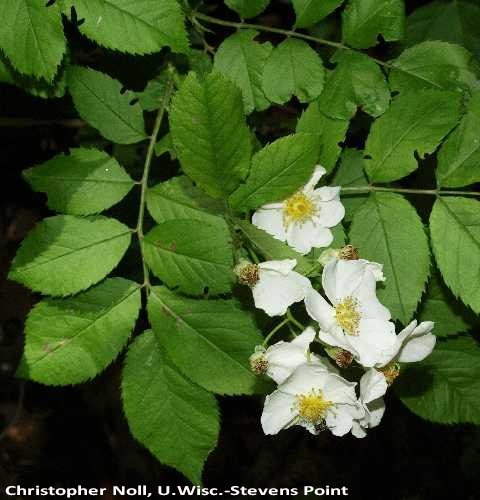
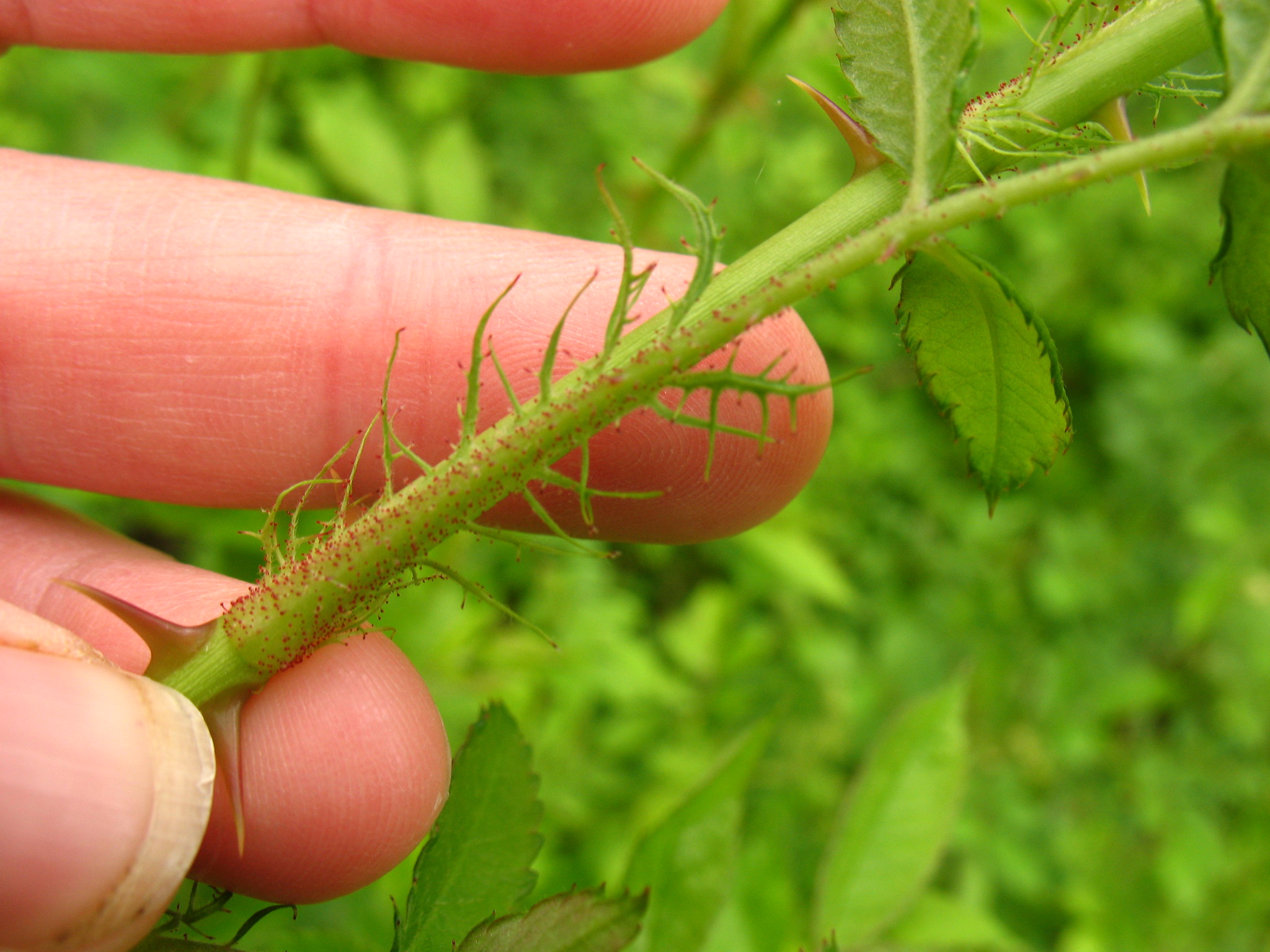
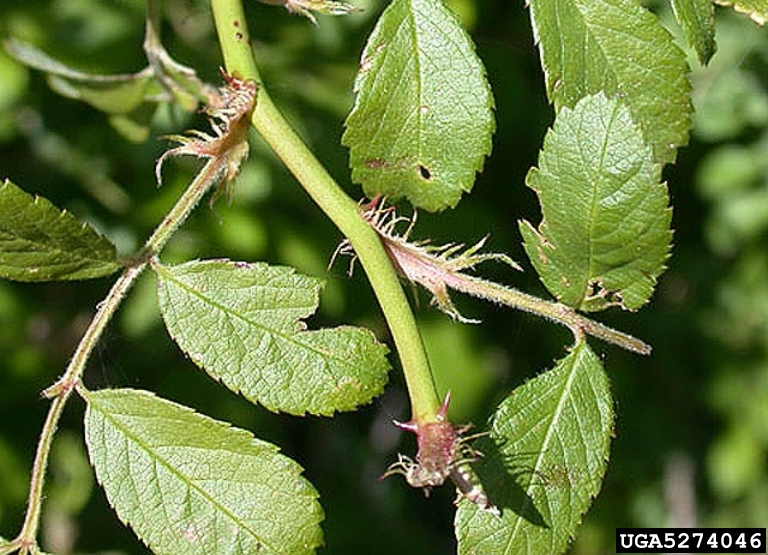

Be aware of look-alike plants
While very similar in appearance to other roses, both native and exotic, multiflora rose is unique in that it has fringed stipules at the base of the leaf.
Dog rose (Rosa canina) is an introduced rose species that is naturalizing in parts of King County. It looks very similar to multiflora rose but lacks the fringed stipules at the base of the leaf.
When in doubt, take photos and report them on iNaturalist.
What to do if you find it
Because multiflora rose is so widespread, property owners in King County are not required to control it. However, we are interested in mapping locations in King County, especially in natural areas or anywhere it was not intentionally planted. We are also gathering information on effective control methods. If you have had any success (or failures) controlling this plant, we would welcome that information as well.
Control methods
We recommend using a combination of methods to control weeds. In areas with few weeds, it is important to act quickly before they become harder to control. Make a long-term plan as it often takes several years to get rid of most weeds. Start in the least infested areas first and then move into more heavily infested areas.
Manual control
Individual plants can be dug up. Larger patches of plants can be controlled by frequent, repeated cutting or mowing (3-6 times per growing season, 2-4 years)
Chemical control
Stay safe when using herbicide:
- Always read the label before use.
- Wear a long-sleeved shirt, long pants, shoes, and eye protection.
- Follow state and local regulations.
After cutting plants you can spray the re-growth with a systemic herbicide such as glyphosate or triclopyr.
Contact us for more information or a site-specific control recommendation in King County. For information in other counties in Washington state, contact your local weed board.
Disposal instructions
Noxious Weed Disposal - Washington State Noxious Weed Control Board

 Translate
Translate